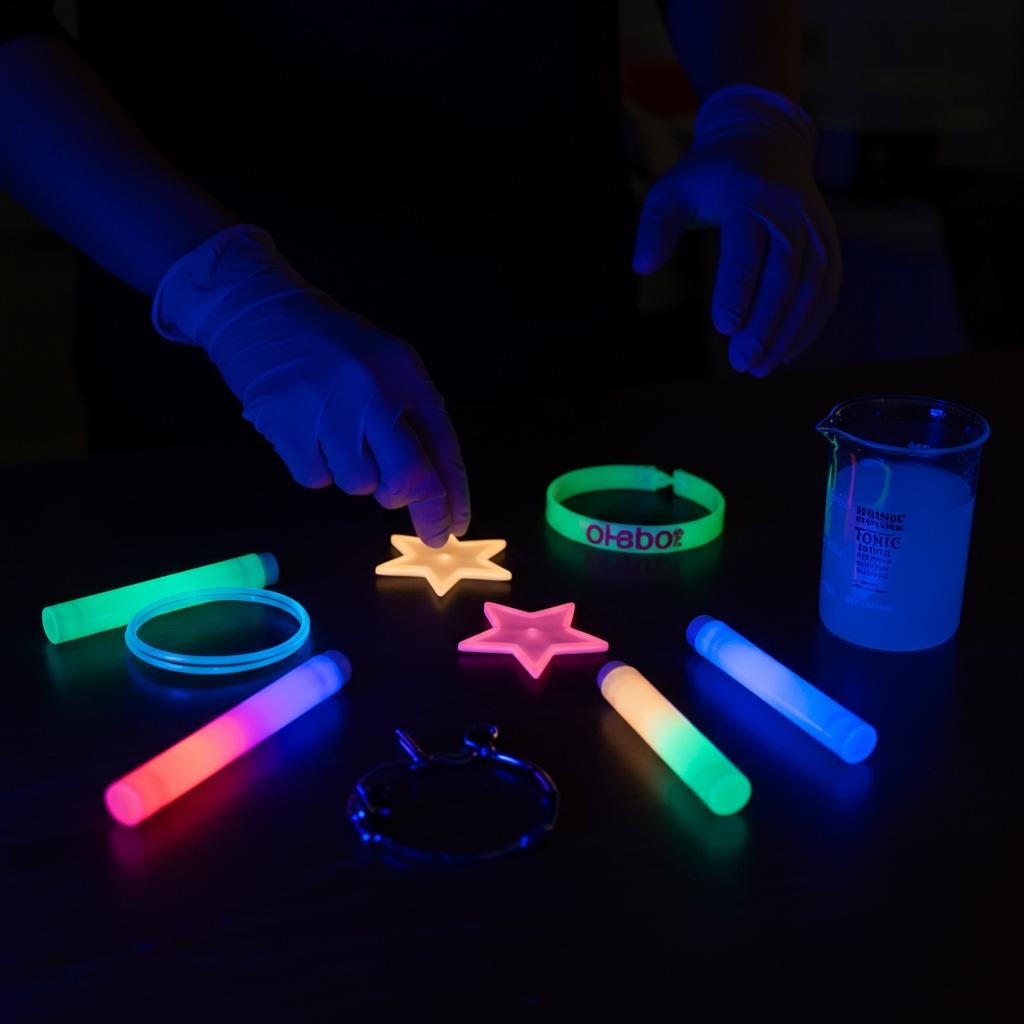Why Some Substances Glow in the Dark: The Secret of Luminescence
 Glow-in-the-dark materials come to life in the lab, showing off the magic of luminescence.
Glow-in-the-dark materials come to life in the lab, showing off the magic of luminescence.
Why Some Substances Glow in the Dark: The Secret of Luminescence
By Peter Teoh, Science Writer
Ever wondered why your glow-in-the-dark stars stick around long after you’ve turned off the lights? Or what’s inside a glow stick that makes it shine at a concert? The answer lies in a cool scientific phenomenon called luminescence—the ability of certain materials to give off light without getting hot. Unlike a light bulb or the sun, which glow because they’re super hot, luminescent materials shine without the heat, and the science behind it is both fascinating and surprisingly accessible1.
The Science of Glow
What is Luminescence?
Luminescence is the general term for any light that’s emitted without heat. It’s different from incandescence, which is what happens when something gets so hot it glows (think light bulbs or lava). Luminescence covers a bunch of different processes, but they all have one thing in common: electrons in the material get “excited” by some kind of energy, and when they settle back down, they release that energy as visible light1.
Types of Luminescence
There are several types of luminescence, each with its own “energy source”:
- Photoluminescence: Light energy is absorbed and then re-emitted. This is what happens with glow-in-the-dark stars and toys—they soak up light (from the sun or a lamp), store the energy, and then slowly release it as a glow2.
- Chemiluminescence: A chemical reaction releases energy as light. Glow sticks are the classic example—when you snap them, chemicals mix and produce a glow without needing any external light[1][4].
- Bioluminescence: Living things like fireflies, jellyfish, and some fungi produce their own light through chemical reactions inside their bodies1.
- Fluorescence: The material glows only while it’s being exposed to a light source, like blacklight posters or tonic water under a UV lamp[6].
How Does Photoluminescence Work?
Most glow-in-the-dark toys and materials use a process called phosphorescence, a type of photoluminescence. Here’s how it works:
- Absorption: The material contains special substances called phosphors (like zinc sulfide or strontium aluminate). When you expose these to light, they absorb the energy2.
- Storage: The energy “excites” electrons in the phosphors, bumping them up to a higher energy level. These electrons stay excited for a while, storing the energy like a battery[2][8].
- Emission: When the lights go out, the excited electrons gradually return to their normal state, releasing the stored energy as visible light—the glow you see in the dark2.
The color and duration of the glow depend on the type of phosphor. Some glow for just a few minutes, while others can last for hours2.
Glow Sticks: Chemiluminescence in Action
Glow sticks don’t need to be “charged” by light. Instead, they rely on a chemical reaction. Inside a glow stick, there’s a small glass vial containing one chemical, surrounded by another. When you bend the stick, the vial breaks, the chemicals mix, and the reaction produces light[4]. This is called chemiluminescence—light from chemistry, not from stored light energy[1][4].
Glowing in Nature: Bioluminescence
Some organisms, like fireflies and certain deep-sea fish, produce their own light through biochemical reactions. This is bioluminescence, and it’s used for communication, attracting mates, or even luring prey1.
Fluorescence: Glow Under UV Light
Some materials, like tonic water or highlighter ink, glow under ultraviolet (UV) light. This is fluorescence—the material absorbs invisible UV light and immediately re-emits it as visible light (usually blue or green). The glow stops as soon as the UV light is turned off[6].
Everyday Examples and Fun Experiments
You’ve probably seen luminescence in lots of places:
- Glow-in-the-dark stars on your ceiling (phosphorescence)
- Glow sticks at parties (chemiluminescence)
- Fireflies on a summer night (bioluminescence)
- Blacklight posters or tonic water under UV light (fluorescence)
Want to try a simple experiment? Shine a blacklight on tonic water—it’ll glow blue because of a chemical called quinine. Add a little bleach, and watch the glow fade as the quinine reacts[6].
Why Does This Matter?
Understanding luminescence isn’t just cool—it’s useful. Scientists use glowing materials in medical imaging, safety signs, and even to track cells in biology. Engineers design energy-efficient LEDs based on similar principles. And, of course, luminescence makes for awesome Halloween costumes and dance parties!
Side Notes
- Not all glowing things are safe to touch or ingest. Always check labels, especially with glow sticks and chemical toys.
- The color of the glow depends on the material. Zinc sulfide usually glows green, while strontium aluminate can glow blue or green.
- Bioluminescence is rare in land animals but common in the deep sea, where sunlight doesn’t reach.
Trending Sidebar
Glow-in-the-dark sneakers, bike paths, and even makeup are becoming more popular, thanks to advances in phosphorescent materials. Researchers are also exploring how to use bioluminescent plants as natural streetlights!